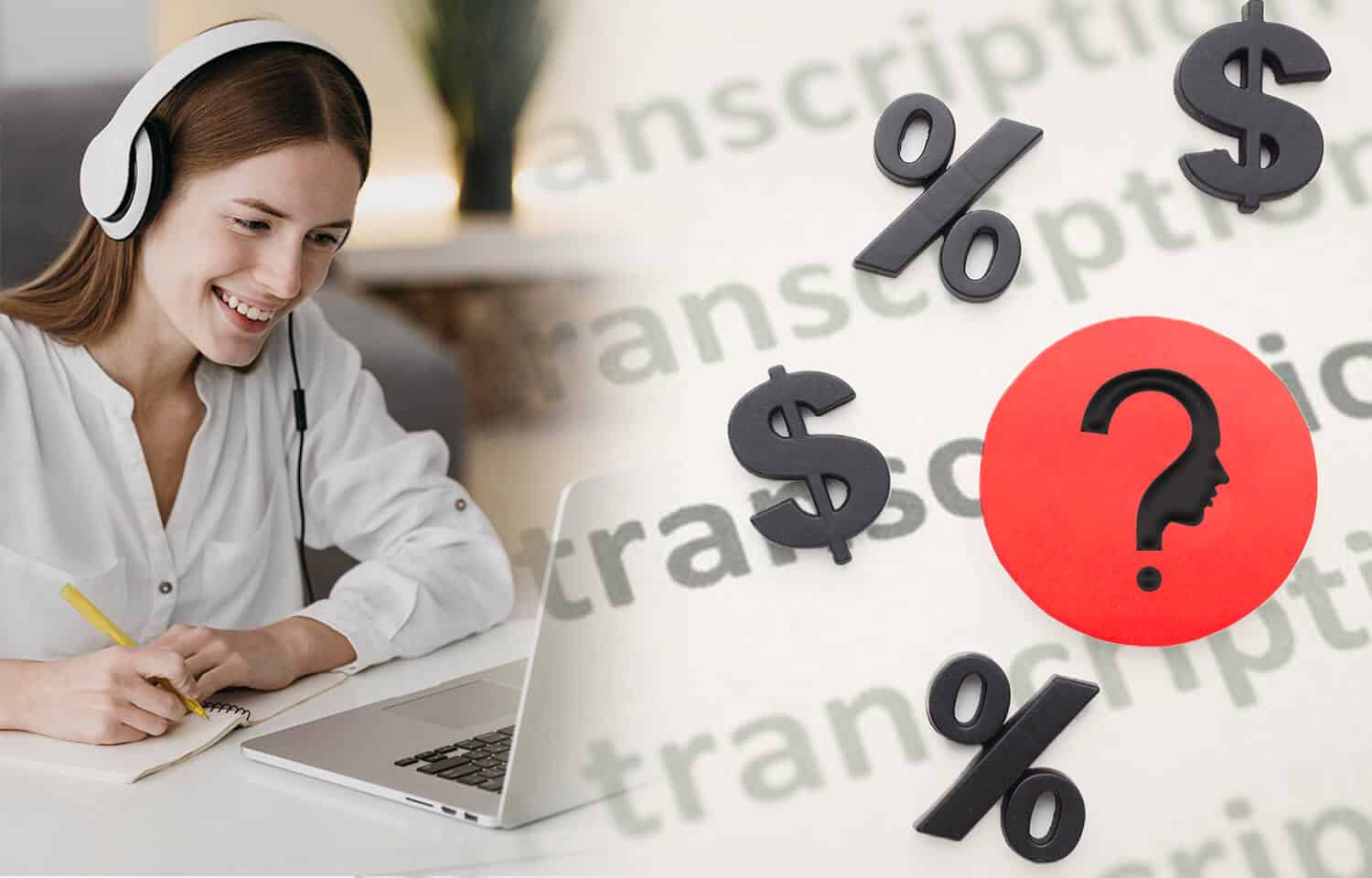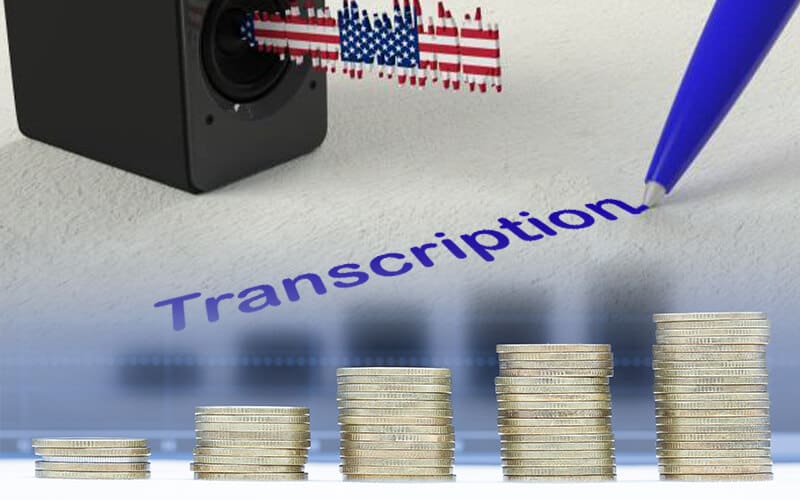Understanding Transcription Rates: What you need to know

If you have ever considered transcribing an audio or video recording, you are probably aware of the importance of understanding transcription rates.
Transcription rates can vary significantly, depending on various factors such as the type of transcription required, the quality of the audio or video recording, the length of the recording, and the turnaround time.
In this article, we will take a detailed look at transcription rates and what you need to know to make informed decisions when choosing a transcription service.
What are Transcription Rates?

Transcription rates refer to the amount of money charged by transcription services for transcribing an audio or video recording.
Transcription rates can vary widely, depending on various factors such as the type of transcription required, the quality of the recording, and the turnaround time.
The 4 Factors that Affect Transcription Rates
1. Type of Transcription
There are different types of transcription, each with its own unique features and requirements.
The most common types of transcription include verbatim transcription, clean transcription, and edited transcription.
- Verbatim transcription involves transcribing every word spoken in the audio or video recording, including filler words, stutters, and pauses.
Verbatim transcription is suitable for legal, medical, and academic transcription, where accuracy and completeness are crucial.
- Clean transcription involves removing non-essential content from the transcript, such as filler words, stutters, and pauses.
Clean transcription is suitable for business and corporate transcription, where the focus is on the main points of the conversation or meeting.
- Edited transcription involves correcting errors in the audio or video recording, such as mispronunciations, background noise, or technical glitches.
Edited transcription is suitable for marketing and advertising transcription, where the transcript needs to be polished and persuasive.
The type of transcription required can significantly affect the transcription rate.
Verbatim transcription is generally more expensive than clean or edited transcription, as it requires more time and effort to transcribe every word spoken.
2. Quality of the Recording
The quality of the audio or video recording can significantly affect the transcription rate.
A high-quality recording, with clear audio and minimal background noise, is easier and quicker to transcribe than a low-quality recording with a lot of background noise, echoes, or technical glitches.
Transcription services may charge extra for low-quality recordings, as they require more time and effort to transcribe accurately.
To avoid extra charges, it’s essential to ensure that your audio or video recording is of the highest possible quality.
3. Length of the Recording
The length of the recording is another factor that affects transcription rates.
Transcription services generally charge per audio minute or per hour of the recording, and the longer the recording, the higher the transcription rate.
However, some transcription services offer volume discounts for longer recordings, so it’s always a good idea to ask if there are any discounts available.
4. Turnaround Time
Turnaround time refers to the time it takes for the transcription service to complete the transcription and deliver the final transcript.
Transcription services generally offer different turnaround times, ranging from a few hours to several days or even weeks.
The faster the turnaround time, the higher the transcription rate.
Transcription services may charge extra for rush orders or expedited turnaround times, as they require more time and effort to complete.
Understanding Transcription Rates
Now that we have covered the factors that affect transcription rates let’s take a closer look at how to understand transcription rates.
1. Per Audio Minute vs. Per Hour
Transcription rates are generally charged per audio minute or per hour of the recording.
Per-audio-minute is the most common pricing model used by transcription services.
It refers to the number of minutes of the recording that needs to be transcribed.
Per hour is another pricing model used by some transcription services.
It refers to the number of hours of the recording that needs to be transcribed. Per-hour pricing is generally more expensive than per-audio-minute pricing, as it takes into account the time required to transcribe the entire recording.
2. Standard vs. Rush Orders
Transcription services generally offer different turnaround times, ranging from a few hours to several days or even weeks.
Standard turnaround time is generally the cheapest option, as it allows the transcription service to schedule the work according to their workload and resources.
Rush orders, on the other hand, are more expensive, as they require the transcription service to prioritise the work and assign more resources to complete the transcription as quickly as possible.
3. Additional Charges
Transcription services may charge additional fees for certain services or requirements.
For example, some transcription services may charge extra for non-English language transcription or for time-stamping the transcript.
It’s essential to understand what services are included in the transcription rate and what additional charges may apply to avoid any unexpected fees.
Choosing the Right Transcription Service
After understanding transcription rates and the factors that affect them let’s take a look at how to choose the right transcription service.
1. Quality of Service
The quality of the transcription service is one of the most critical factors to consider when choosing a transcription service.
You want a service that is accurate, reliable and delivers on time.
Look for transcription services with a proven track record of delivering high-quality transcriptions and positive reviews from satisfied customers.
2. Type of Transcription
Consider the type of transcription required for your needs.
- If accuracy and completeness are crucial, then verbatim transcription may be the best option.
- If the focus is on the main points of the conversation or meeting, then clean transcription may be more suitable.
- If the transcript needs to be polished and persuasive, then edited transcription may be the best option.
Choose a transcription service that offers the type of transcription required for your needs.
3. Turnaround Time
Consider the turnaround time required for your needs.
- If time is of the essence, then a transcription service that offers rush orders may be the best option.
- If you have more time, then a transcription service that offers a standard turnaround time may be more suitable.
4. Price
Consider the price of the transcription service, but don’t make it the only factor in your decision.
Remember that quality and accuracy are essential, and a low price may not necessarily mean good value.
Choose a transcription service that offers a fair and transparent pricing structure and provides high-quality transcription services at a reasonable price.
Conclusion
To conclude, understanding transcription rates is crucial when choosing a transcription service.
The type of transcription required, the quality of the recording, the length of the recording, and the turnaround time can all affect transcription rates.
Choose a transcription service that offers high-quality transcriptions, the type of transcription required for your needs, and a fair and transparent pricing structure.
By doing so, you can ensure that you get accurate and reliable transcriptions that meet your needs and budget.
Contact us today at Translation Partner to get a quote for your transcription service.
